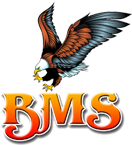Cooling Tower Preventive Maintenance Service
Start-up and Preventative Maintenance Services to maximize the operating life of your evaporative cooling system, BMS Representative can provide start-up and preventive maintenance services which will reduce the potential for unplanned downtime due to equipment failure and keep it operating at peak efficiency. BMS Representative can provide you with services that are custom-tailored to your equipment and operational requirements.
The services required to maintain a piece of evaporative cooling equipment are primarily a function of the quality of the air and water in the locality of the installation:
Air: The most harmful atmospheric conditions are those with unusual quantities of industrial smoke, chemical fumes, salt, or heavy dust. Such airborne impurities are carried into the equipment and absorbed by the recirculating water to form a corrosive solution.
Water: The most harmful conditions develop as water evaporates from the equipment, leaving behind the dissolved solids originally contained in the make-up water. These dissolved solids may be either alkaline or acidic and, as they are concentrated in the circulating water, can produce scaling or accelerate corrosion.
The extent of impurities in the air and water determines the frequency of most maintenance services and also governs the extent of water treatment which can vary from a simple continuous bleed and biological control to a sophisticated treatment system. Refer to “Water Treatment” in the operation manual provided at the time of installation.
The weekly inspections of your cooling tower must include testing the water on open-loop towers and manually turning the tower. The monthly inspections of your tower cooling must include cleaning the pump sump screen, checking the bearings and motors, checking belts, tower structure, chemical levels, and most especially the motor mounts and brakes. You are also recommended to test the water on closed-loop towers. The bi-annual inspections of your cooling towers should include inspections of the water nozzles. All the problems and deficiencies must be addressed during the time of inspection. It is also highly recommended to have an extra set of tower belts.
The Maintenance Procedures in Cleaning your Cooling Tower
Keeping and maintaining a clean cooling tower is considered as critical especially when it comes to its operation. Every six months, your cooling tower must be cleaned and drained with the use of power washer. Mineral and algae deposits are usual problems in some parts of the world. Here are some of the maintenance procedures that are creatively designed and developed for your cooling tower.
Visual Inspection
In cleaning your cooling tower, the first thing that you should do is to visually inspect your cooling tower. It is very important to visually inspect the nozzles and at the same time remove the debris from them. Nozzles can be found at the top of the cooling tower. There are times that the leaves and sticks get sucked up as well as the debris are caught in the header.
Power Wash
If your cooling tower is drained, you need to disconnect the drain from the piping to avoid clogging. You also need to bear in mind that you should shut down the water supply before starting the power wash.
Sump Screen
The sump screen is located inside your cooling tower. You should properly clean the screen to assure the maximum water flow to the sump pump.
It is highly recommended to follow the preventive maintenance procedures in your cooling tower to make sure that your equipment will extend its life span and it can be used for years.
BAC products can be operated at subfreezing ambient temperatures provided proper operating methods are established and diligently followed.
- Carry out frequent visual inspections and routine maintenance services during operation in subfreezing weather.
- Ensure all controls for capacity and freeze protection are set properly and functioning normally.
- Prevent excessively high water levels and possible overflow of the cold water basin due to overpumping, clogged strainers, or makeup valve malfunction.
- Some unit icing can be expected in very cold weather. Usually, this will not affect the operation of the unit. Resolve any icing conditions that may damage the unit or the supports, impair the system performance or create a safety hazard.



